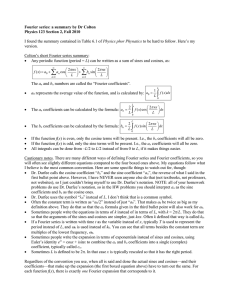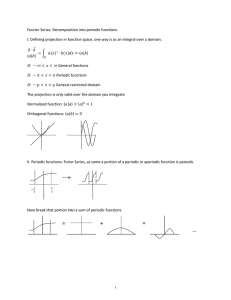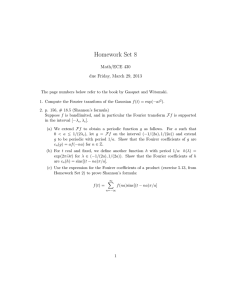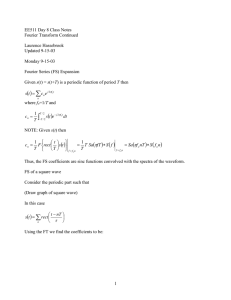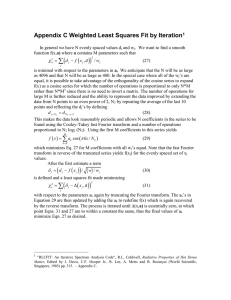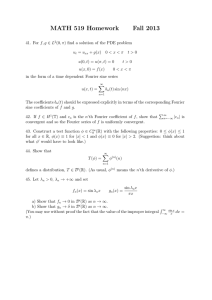Fourier series summary
advertisement
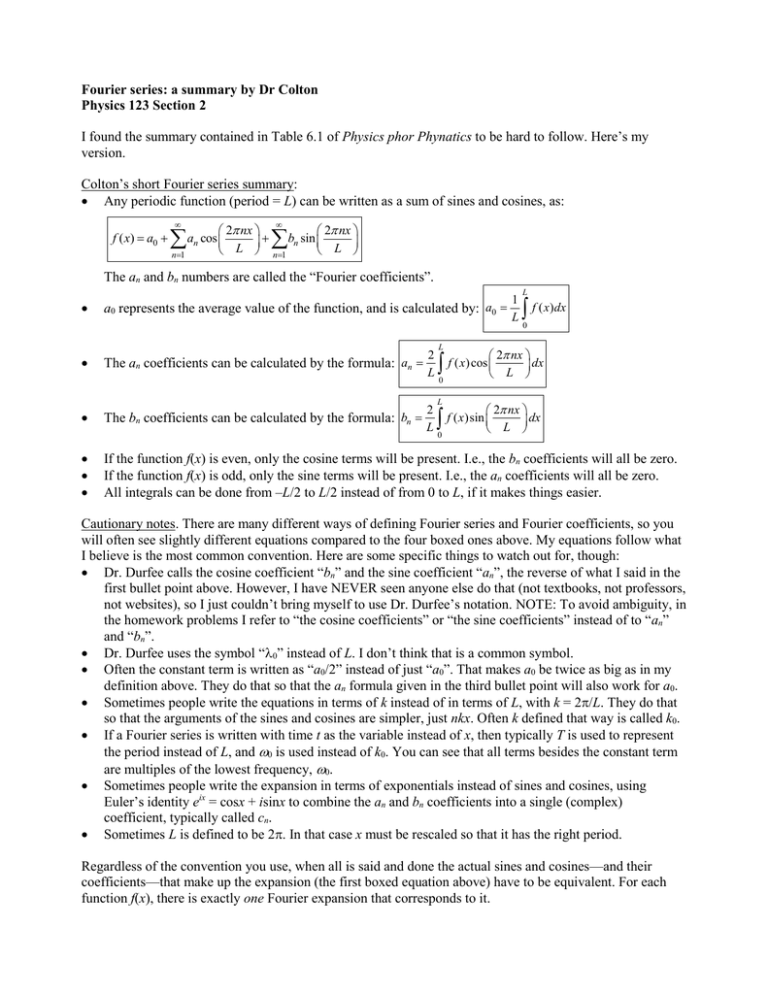
Fourier series: a summary by Dr Colton Physics 123 Section 2 I found the summary contained in Table 6.1 of Physics phor Phynatics to be hard to follow. Here’s my version. Colton’s short Fourier series summary: Any periodic function (period = L) can be written as a sum of sines and cosines, as: f ( x) a0 2 nx an cos L n1 b sin n n1 2 nx L The an and bn numbers are called the “Fourier coefficients”. 1 a0 represents the average value of the function, and is calculated by: a0 L 2 The an coefficients can be calculated by the formula: an L 2 The bn coefficients can be calculated by the formula: bn L L L f ( x)dx 0 2 nx dx L f ( x) cos 0 L 2 nx dx L f ( x)sin 0 If the function f(x) is even, only the cosine terms will be present. I.e., the bn coefficients will all be zero. If the function f(x) is odd, only the sine terms will be present. I.e., the an coefficients will all be zero. All integrals can be done from –L/2 to L/2 instead of from 0 to L, if it makes things easier. Cautionary notes. There are many different ways of defining Fourier series and Fourier coefficients, so you will often see slightly different equations compared to the four boxed ones above. My equations follow what I believe is the most common convention. Here are some specific things to watch out for, though: Dr. Durfee calls the cosine coefficient “bn” and the sine coefficient “an”, the reverse of what I said in the first bullet point above. However, I have NEVER seen anyone else do that (not textbooks, not professors, not websites), so I just couldn’t bring myself to use Dr. Durfee’s notation. NOTE: To avoid ambiguity, in the homework problems I refer to “the cosine coefficients” or “the sine coefficients” instead of to “an” and “bn”. Dr. Durfee uses the symbol “0” instead of L. I don’t think that is a common symbol. Often the constant term is written as “a0/2” instead of just “a0”. That makes a0 be twice as big as in my definition above. They do that so that the an formula given in the third bullet point will also work for a0. Sometimes people write the equations in terms of k instead of in terms of L, with k = 2/L. They do that so that the arguments of the sines and cosines are simpler, just nkx. Often k defined that way is called k0. If a Fourier series is written with time t as the variable instead of x, then typically T is used to represent the period instead of L, and 0 is used instead of k0. You can see that all terms besides the constant term are multiples of the lowest frequency, 0. Sometimes people write the expansion in terms of exponentials instead of sines and cosines, using Euler’s identity eix = cosx + isinx to combine the an and bn coefficients into a single (complex) coefficient, typically called cn. Sometimes L is defined to be 2. In that case x must be rescaled so that it has the right period. Regardless of the convention you use, when all is said and done the actual sines and cosines—and their coefficients—that make up the expansion (the first boxed equation above) have to be equivalent. For each function f(x), there is exactly one Fourier expansion that corresponds to it.
